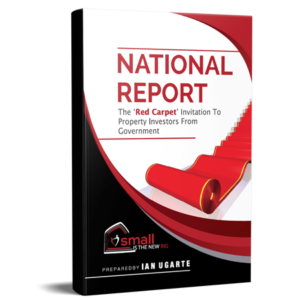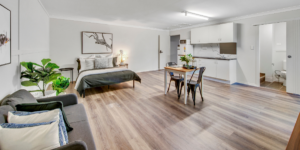Before I started Small Is the New Big, I was already a successful investor.
But there was something missing. I thought money would make me happy, except that it turned out I was quite disappointed with the end result.
After a bit of searching, I traced the problem to not having a purpose in my life – one that’s really worthy. I figured that there had to be something I could do to give back to the community.
That’s when the idea of micro-apartments popped into my head. As Australia’s housing affordability crisis grew worse, I knew I had to do something to confront it and help people live their lives without housing stress.
That’s when Christine and I started Small Is the New Big and worked on building micro-apartments across Australia. These are individual houses with 3-8 rooms, which in some areas allows each room to have its own kitchenette or wet bar. In addition, there’s a communal area where people could get together.
It didn’t surprise me that the rooms rented out quickly. What surprised me was its popularity with one particular demographic. They are women in their 50s and victims of white-collar homelessness.
They’d gotten married in their 20s or 30s and had children to whom they devoted their attention at the cost of their career. But something happened with their partners, a divorce, death, or something else, and they became alone with little to no financial support.
Furthermore, it came to my attention that this is the fastest-growing demographic in Australia. This is why I’ve decided to focus on this market and provide these women with affordable homes.
When they move in, they get all the space they need at a low cost. At the same time, the investor generates high revenue from renting out different compartments of the house. It’s truly a win-win situation that benefits everyone.
The important part you need to know is there is specific legislation, rules and requirements to rent these rooms out to unrelated parties legally. This is something a lot of people don’t understand and unfortunately are out there doing this strategy illegally, putting both their tenants and themselves at risk.
My goal is to build one million self contained homes by December 2027. To do this, I’ll have to enlist the help of more investors by teaching them how to do these strategies compliantly across the country. To see what you can do to make a difference, sign up for my free masterclass.





